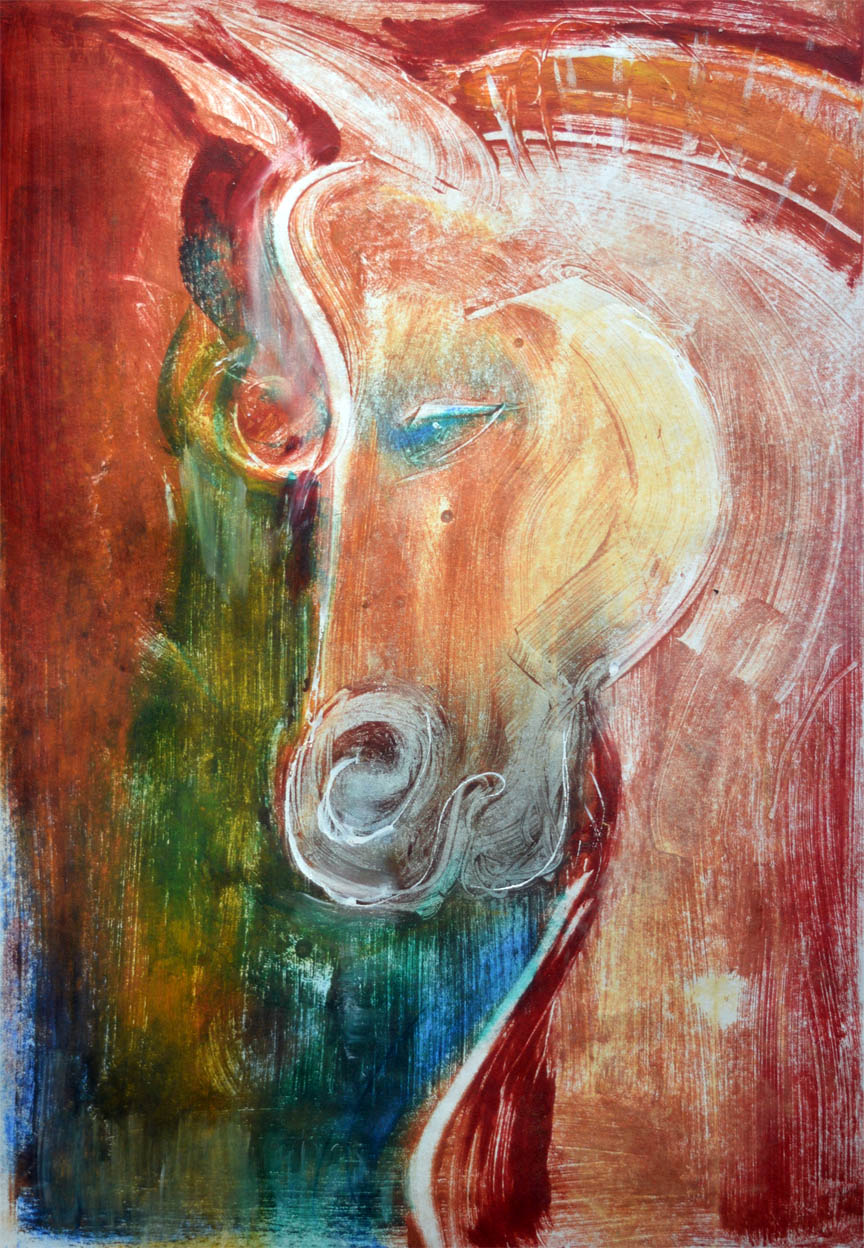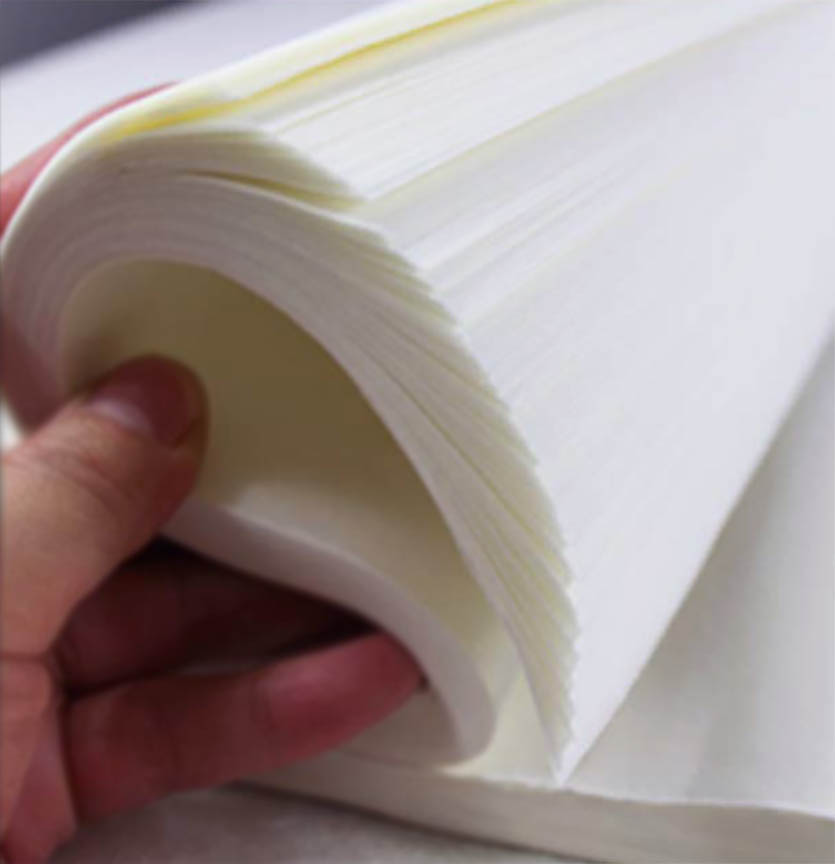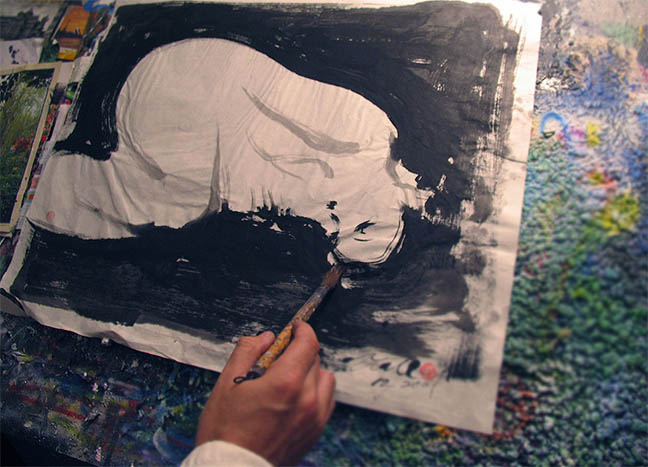
Monotype
Monotyping is a type of printmaking made by drawing or painting on a smooth, non-absorbent surface. The surface, or matrix, was historically a copper etching plate, but in contemporary work it can vary from zinc or glass to acrylic glass. The image is then transferred onto a sheet of paper by pressing the two together, usually using a printing-press. Monotypes can also be created by inking an entire surface and then, using brushes or rags, removing ink to create a subtractive image, e.g. creating lights from a field of opaque colour. The inks used may be oil based or water based. With oil based inks, the paper may be dry, in which case the image has more contrast, or the paper may be damp, in which case the image has a 10 percent greater range of tones.
Monotyping produces a unique print, or monotype; most of the ink is removed during the initial pressing. Although subsequent reprintings are sometimes possible, they differ greatly from the first print and are generally considered inferior. These prints from the original plate are called “ghost prints.” A print made by pressing a new print onto another surface, effectively making the print into a plate, is called a “cognate”. Stencils, watercolor, solvents, brushes, and other tools are often used to embellish a monotype print. Monotypes can be spontaneously executed and with no previous sketch.

Xuan Paper
Xuan paper (xuanzhi simplified Chinese: 宣纸; traditional Chinese: 宣紙; pinyin: xuānzhǐ), or Shuen paper or rice paper, is a kind of paper originating in ancient China used for writing and painting. Xuan paper is renowned for being soft and fine textured, suitable for conveying the artistic expression of both Chinese calligraphy and painting.
Xuan paper features great tensile strength, smooth surface, pure and clean texture and clean stroke, great resistance to crease, corrosion, moth and mold. The majority of ancient Chinese books and paintings by famous painters that survived until today are well preserved on Xuan paper. Xuan paper won the Golden Award at the Panama International Exposition in 1915. Xuan paper was used to make scrolls.

Ink Painting
Ink wash painting is usually done on xuan paper (Chinese) or washi (Japanese paper) both of which are highly absorbent and unsized. Silk is also used in some forms of ink painting. Many types of xuan paper and washi do not lend themselves readily to a smooth wash the way watercolor paper does. Each brush stroke is visible, so any “wash” in the sense of Western style painting requires partially sized paper. Paper manufacturers today understand artists’ demands for more versatile papers and work to produce kinds that are more flexible. If one uses traditional paper, the idea of an “ink wash” refers to a wet-on-wet technique, applying black ink to paper where a lighter ink has already been applied, or by quickly manipulating watery diluted ink once it has been applied to the paper by using a very large brush.
In ink wash paintings, as in calligraphy, artists usually grind inkstick over an inkstone to obtain black ink, but prepared liquid inks (墨汁 in Japanese, bokuju) are also available. Most inksticks are made of soot from pine or oil combined with animal glue. An artist puts a few drops of water on an inkstone and grinds the inkstick in a circular motion until a smooth, black ink of the desired concentration is made. Prepared liquid inks vary in viscosity, solubility, concentration, etc., but are in general more suitable for practicing Chinese calligraphy than executing paintings. Inksticks themselves are sometimes ornately decorated with landscapes or flowers in bas-relief and some are highlighted with gold.
Ink wash painting brushes are similar to the brushes used for calligraphy and are traditionally made from bamboo with goat, cattle, horse, sheep, rabbit hair. The brush hairs are tapered to a fine point, a feature vital to the style of wash paintings.
Different brushes have different qualities. A small wolf-hair brush that is tapered to a fine point can deliver an even thin line of ink (much like a pen). A large wool brush (one variation called the big cloud) can hold a large volume of water and ink. When the big cloud brush rains down upon the paper, it delivers a graded swath of ink encompassing myriad shades of gray to black.
Once a stroke is painted, it cannot be changed or erased. This makes ink and wash painting a technically demanding art-form requiring great skill, concentration, and years of training.